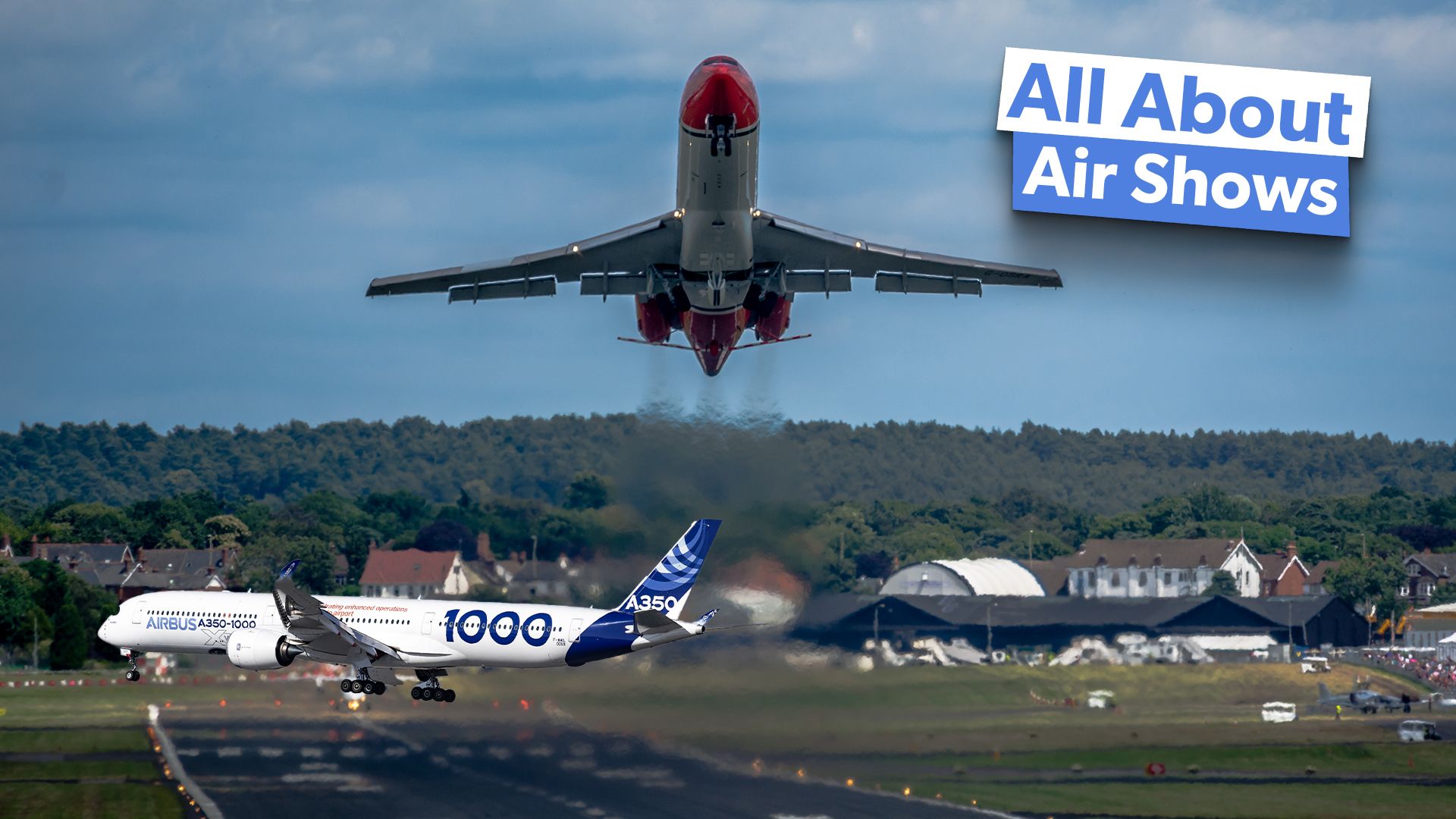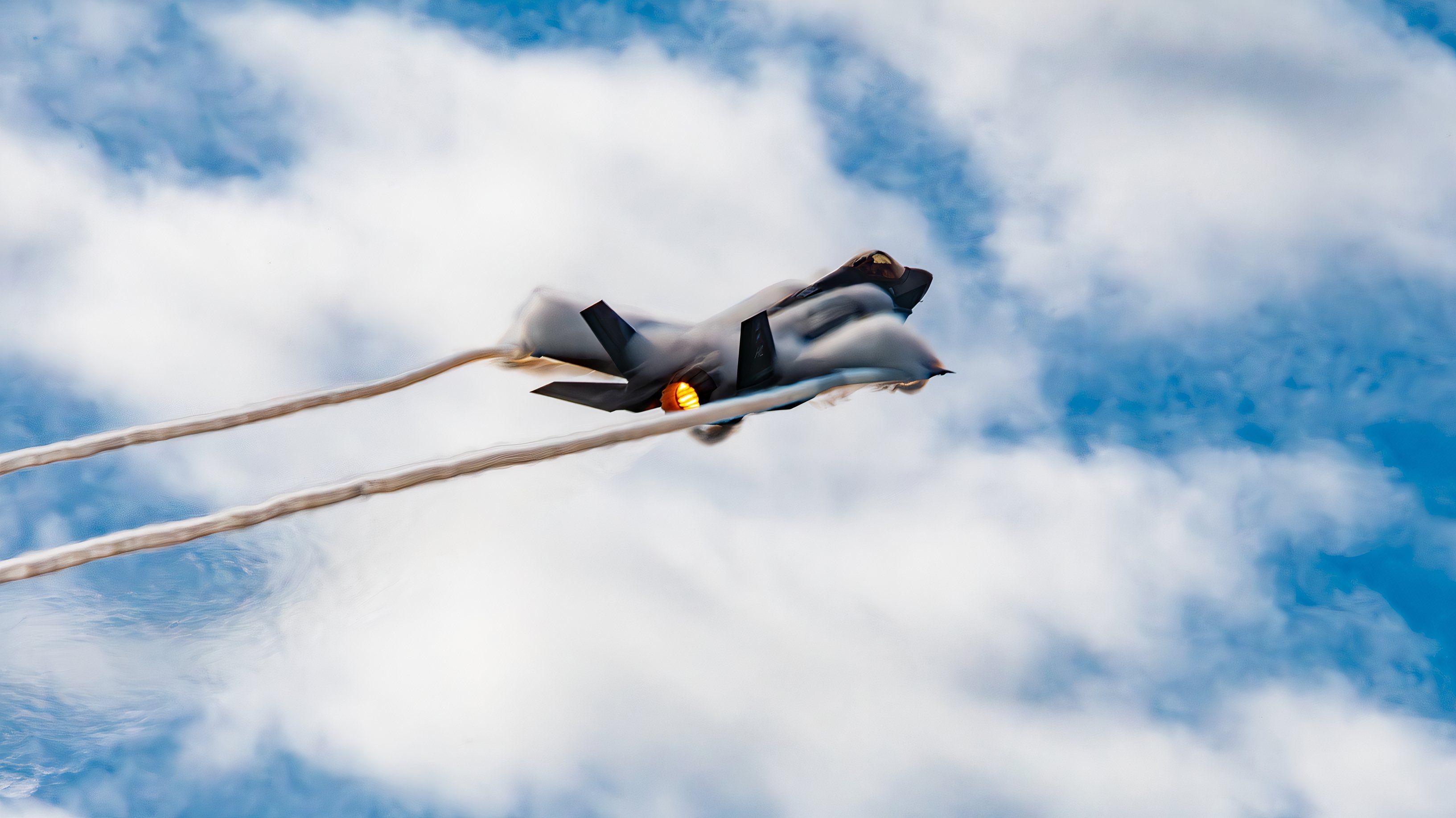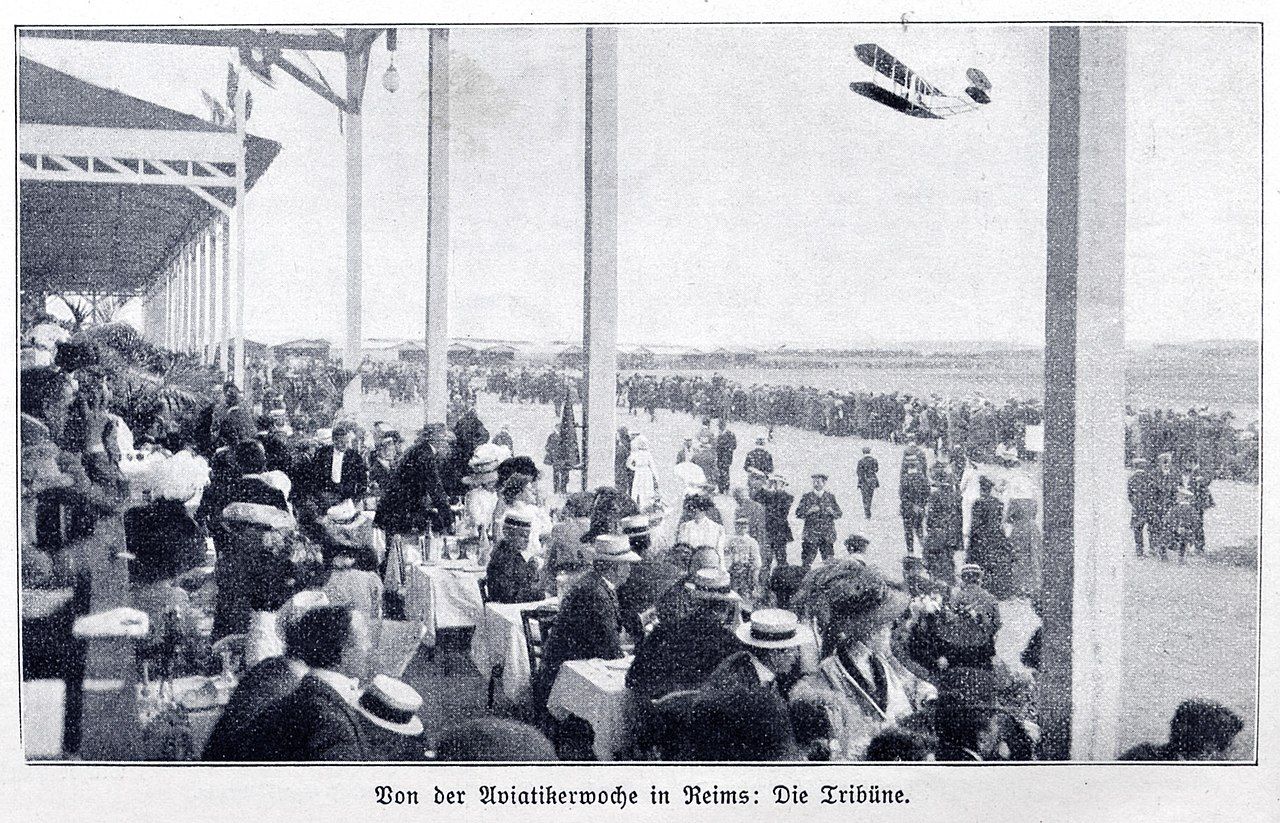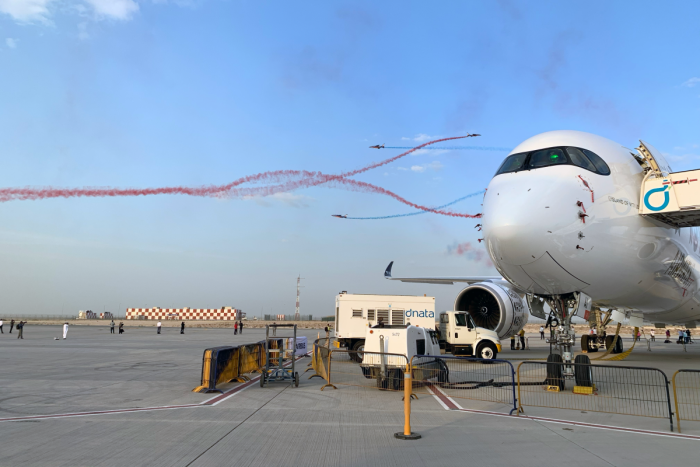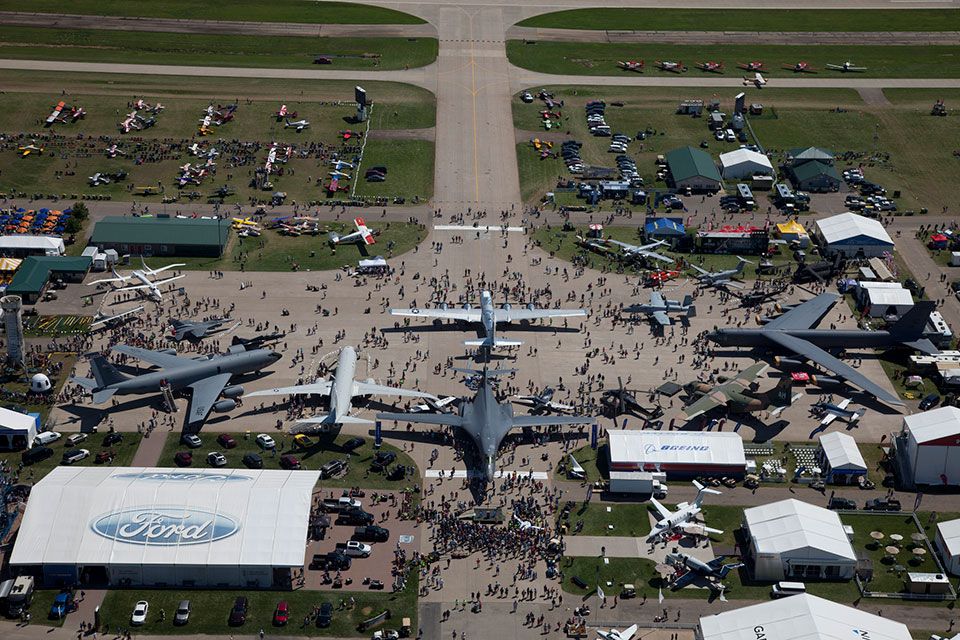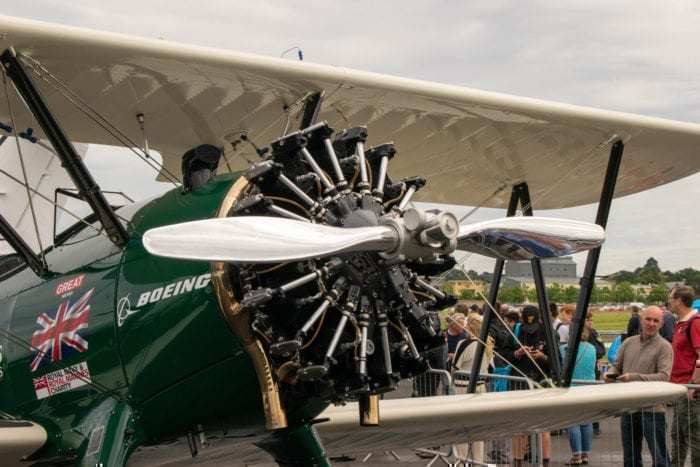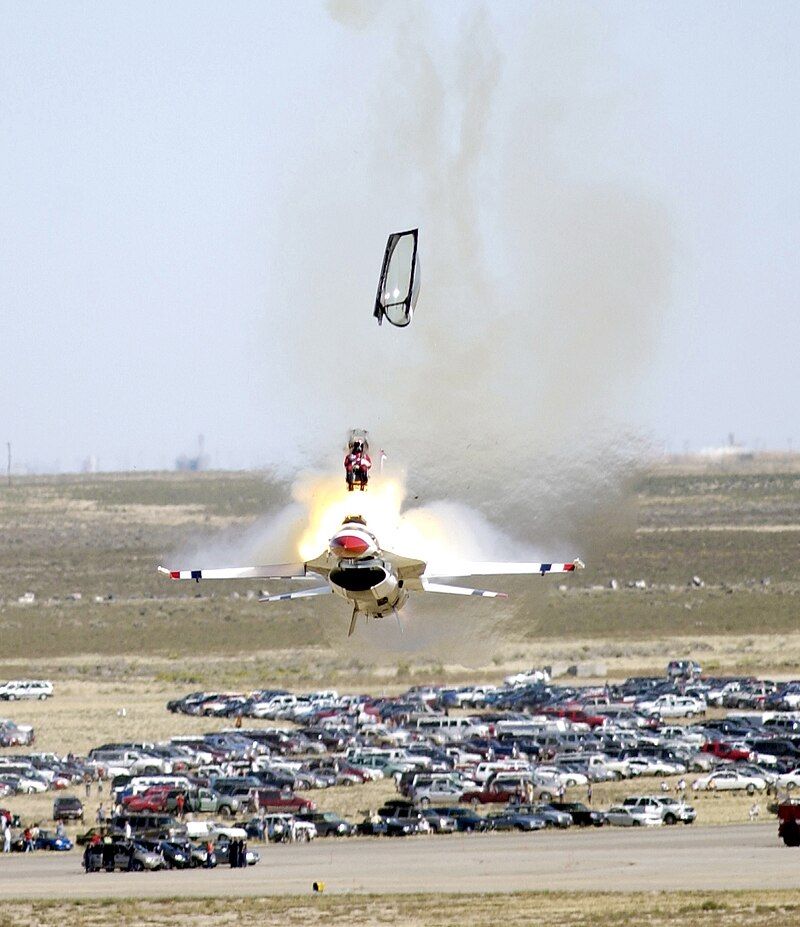The International Council of Airshows reports that nearly 10-12 million people attend airshows in North America
each year. There are more than 300 airshow pilots in the United States
and Canada
alone. Airshows started taking place almost half a decade after the Wright Brothers took to the skies.
Photo: Joe Kunzler | Simple Flying
Airshows only grew in popularity after the first of these were held. Let’s look at five fun facts about airshows you might not have known.
5
The first air show was held in 1909
The Wright Brothers were the noticeable absentees
The first organized international airshow was called the “Great Aviation Week”. This event, which took place in 1909 in Reims, France, saw more than 200,000 spectators. One of the most notable people who was present at the airshow included Louis Blériot – the first person to make an airplane flight across the English Channel. The
Wright Brothers
, however, were noticeably absent.
Some of the most distinguishing things about the airshow were the following:
- A miniature city was created for the event, according to the Air and Space Museum.
- A 600-seat restaurant was also made.
- Out of the 38 airplanes registered for the airshow, only 23 took to the skies.
The most prestigious award handed out during the airshow was the Gordon Bennett Aviation Trophy- a prize that was named after the American owner and publisher of the New York Herald newspaper – Fordon Bennett Jr. An American aviator, Glenn Curtiss, won the prize and secured an opportunity for the US to organize the next international airshow, reported Smithsonian Magazine.
4
Revenue from the airshow industry is nearly $110 million per year
75 percent of attendees of airshows have a household income of $35,000 or more
According to IATA, the total revenue of the aviation industry in 2024 was $25.7 billion. A chunk of this revenue comes from the airshow industry, which contributes to $110 million of annual revenue. According to the International Council of Air Shows, international airshows attract spectators who are “well-educated, affluent group of men, women and children of all ages“.
Photo: Tom Boon – Simple Flying
Here are a few statistics about airshows revealed by the same publication:
- Approximately 70 percent of the audience have received some form of college education.
- The average adult spectator is just under 39 years of age.
- Around half of the spectators are between 30 and 50.
Some of the most popular airshows include the Farnborough Airshow
, Le Bourget, Singapore Airshow, and Dubai Airshow
. It has been reported by the International Council for Air Shows that in the US and Canada alone, around 325–350 airshows are held each year.
3
EAA AirVenture Oshkosh – the biggest airshow in the world
The airshow has already celebrated its 50th anniversary
|
First organized in |
1953 |
|---|---|
|
Venue |
Wittman Regional Airport and Pioneer Airport |
|
Duration |
One week (the last full week in July) |
EAA AirVenture Oshkosh, which takes place in Oshkosh, Winsconsin, United States, is an airshow that more than half a million people visit, reported wbay.com. In comparison, ![]() Farnborough International Airshow 2024
Farnborough International Airshow 2024
reported “over 100,000 visitors, 1500 exhibitors from over 60 countries, 90 civil and military aircraft, over 390 civil, military and space delegations“.
In 2004, the airshow had a theme of “Launching the Next Century of Flight” – an event grand enough to draw comparison [from the-then President of Experimental Aircraft Association (EAA) Tom Poberezny] with Kitty Hawk, the airport from where the Wright Brothers first took to the skies:
“The first century of flight was launched at Kitty Hawk, but what better place to launch the second century than in Oshkosh….Oshkosh has become known as an event where innovation is always introduced”
EAA reported that EAA AirVenture Oshkosh “contributes $170 million of economic benefit to the state’s Fox Valley region each year.”
2
Five basic categories of aerobatic maneuvers
A complex, choreographed combination of these maneuvers gives a wholesome effect
The following are the five basic categories of aerobatic maneuvers:
- Horizontal and vertical lines
- Loops
- Rolls
- Spins
- Hammerheads (stall turns)
During the airshows, these maneuvers are performed at high speeds and extreme angles, combined with rapid changes in direction. While trying these maneuvers, pilots push the boundaries of what is possible while performing aerobatic maneuvers.
Photo: Tom Boon – Simple Flying
While maneuvers such as Wing-Over, which involves pulling up and banking the plane simultaneously, are considered to be rather simple, the most difficult aerobatic maneuver is known as the Herbst Maneuver, reports skycombatace.com:
“Named after the German pilot who invented it, this maneuver involves changing direction quickly while flying at high speeds. The aircraft performs a rapid 180-degree turn, all while maintaining its altitude. This complex maneuver requires precision and experience, making it one of the most difficult aerobatic stunts to master.”
1
The pilots who perform airshows undergo rigorous training
Glory awats pilots, but the risks are considerable
It goes without saying that becoming an airshow pilot isn’t easy. According to disciplesofflight.com, even a decade of training might not be enough to secure a position as an airshow pilot. Further, there are the risks involved too:
“There is a thrill of vulnerability at all airshows. There is no way of making everything completely safe. When the machines are being thrashed to capacity and the pilots are flying at their limits to dazzle, things are bound to go wrong sometimes. There have been some historic disasters, but the danger is a part of the attraction.”
The same publication also reported that there is about one airshow pilot casualty every year, which means that without rigorous training, one wouldn’t be able to perform as an airshow pilot. Some of the challenges that airshow pilots need to overcome include:
- Staying hydrated to prevent fatigue.
- Avoid eating specific foods that alter blood pressure levels before flying.
- High levels of g-forces from aerobatic flying (which can be overcome with strength training, anaerobic and aerobic exercises)
The risk of being an airshow pilot was highlighted best by the death of World champion aerobatic pilot, Michel Leusch. After he lost control of his XtremeAir XA-42, the stunt pilot for Red Bull died at the 1st Silk Road International General Aviation Convention at Danxia airport in China.

